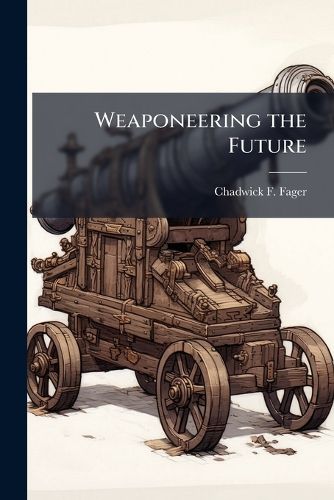Readings Newsletter
Become a Readings Member to make your shopping experience even easier.
Sign in or sign up for free!
You’re not far away from qualifying for FREE standard shipping within Australia
You’ve qualified for FREE standard shipping within Australia
The cart is loading…






Direct Energy weapons can exist on the battlefield of today. Yet, the warfighter needs to know what Probability of Damage theses weapons can attain. Currently, the Joint Munitions Effectiveness Manual calculates a Single Sortie Probability of Damage for conventional Blast and Fragmentation weapons. Using Futures Research methodology allows determination of what effects Direct Energy weapons will impart in the year 2035. The Status of Futures Index (SoFI) method compares complex entities to one another across multiple dimensions. Adapting the Single Sortie Probability of Damage formula for Lasers, Microwave and Millimeter wave weapons allows a determination of their effectiveness. The required formulas for each type of Direct Energy Weapons' Probability of Damage (or Effect) are derived and explained. The Direct Energy weapons are compared to both conventional weapons and one another. Adjusting these Probability equations adjusted for various inputs enables a forecast of the future capabilities of each weapon. The current trend trajectory establishes a baseline estimate of future Probabilities of Effect. Then, disruptive technologies are analyzed for their effect on the weapons capabilities. Each type of weapon poses a unique challenge. For Laser to match the capabilities of Blast/Fragmentation weapons, the power output must be increased. Microwaves, not only require increases in power, but also advances in antenna technology. Millimeter wave weapons can currently produce the required power, but manufacturing the weapons proves an obstacle. To overcome these difficulties, new technologies must be pursued. The SoFI method allows continuous evaluation of progress toward the goal of effective Direct Energy Weapons.
This work has been selected by scholars as being culturally important, and is part of the knowledge base of civilization as we know it. This work was reproduced from the original artifact, and remains as true to the original work as possible. Therefore, you will see the original copyright references, library stamps (as most of these works have been housed in our most important libraries around the world), and other notations in the work.
This work is in the public domain in the United States of America, and possibly other nations. Within the United States, you may freely copy and distribute this work, as no entity (individual or corporate) has a copyright on the body of the work.
As a reproduction of a historical artifact, this work may contain missing or blurred pages, poor pictures, errant marks, etc. Scholars believe, and we concur, that this work is important enough to be preserved, reproduced, and made generally available to the public. We appreciate your support of the preservation process, and thank you for being an important part of keeping this knowledge alive and relevant.
$9.00 standard shipping within Australia
FREE standard shipping within Australia for orders over $100.00
Express & International shipping calculated at checkout
Stock availability can be subject to change without notice. We recommend calling the shop or contacting our online team to check availability of low stock items. Please see our Shopping Online page for more details.
Direct Energy weapons can exist on the battlefield of today. Yet, the warfighter needs to know what Probability of Damage theses weapons can attain. Currently, the Joint Munitions Effectiveness Manual calculates a Single Sortie Probability of Damage for conventional Blast and Fragmentation weapons. Using Futures Research methodology allows determination of what effects Direct Energy weapons will impart in the year 2035. The Status of Futures Index (SoFI) method compares complex entities to one another across multiple dimensions. Adapting the Single Sortie Probability of Damage formula for Lasers, Microwave and Millimeter wave weapons allows a determination of their effectiveness. The required formulas for each type of Direct Energy Weapons' Probability of Damage (or Effect) are derived and explained. The Direct Energy weapons are compared to both conventional weapons and one another. Adjusting these Probability equations adjusted for various inputs enables a forecast of the future capabilities of each weapon. The current trend trajectory establishes a baseline estimate of future Probabilities of Effect. Then, disruptive technologies are analyzed for their effect on the weapons capabilities. Each type of weapon poses a unique challenge. For Laser to match the capabilities of Blast/Fragmentation weapons, the power output must be increased. Microwaves, not only require increases in power, but also advances in antenna technology. Millimeter wave weapons can currently produce the required power, but manufacturing the weapons proves an obstacle. To overcome these difficulties, new technologies must be pursued. The SoFI method allows continuous evaluation of progress toward the goal of effective Direct Energy Weapons.
This work has been selected by scholars as being culturally important, and is part of the knowledge base of civilization as we know it. This work was reproduced from the original artifact, and remains as true to the original work as possible. Therefore, you will see the original copyright references, library stamps (as most of these works have been housed in our most important libraries around the world), and other notations in the work.
This work is in the public domain in the United States of America, and possibly other nations. Within the United States, you may freely copy and distribute this work, as no entity (individual or corporate) has a copyright on the body of the work.
As a reproduction of a historical artifact, this work may contain missing or blurred pages, poor pictures, errant marks, etc. Scholars believe, and we concur, that this work is important enough to be preserved, reproduced, and made generally available to the public. We appreciate your support of the preservation process, and thank you for being an important part of keeping this knowledge alive and relevant.